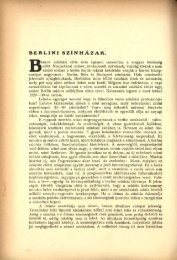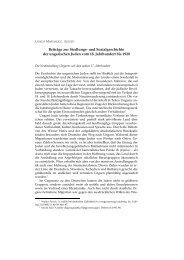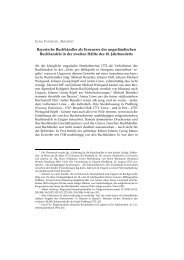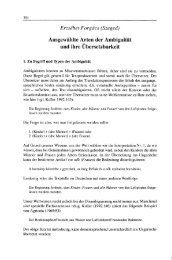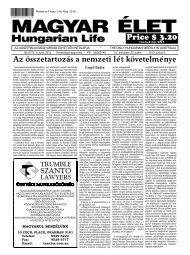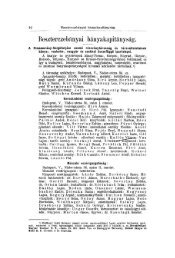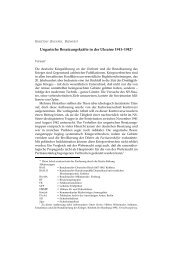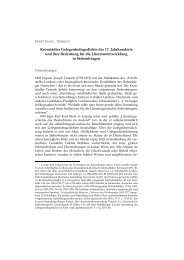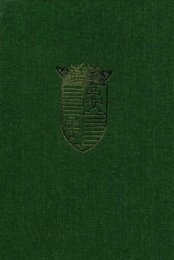Journal of Eurasian Studies - EPA
Journal of Eurasian Studies - EPA
Journal of Eurasian Studies - EPA
Create successful ePaper yourself
Turn your PDF publications into a flip-book with our unique Google optimized e-Paper software.
April‐June 2010 JOURNAL OF EURASIAN STUDIES Volume II., Issue 2.<br />
_____________________________________________________________________________________<br />
2. Mallory and Mair are also quick to point out that the Uyghurs, who moved to Xinjiang from the<br />
Baikal area in 840, show marked physical resemblance to the ancient Tarim Basin populations, and thus<br />
they can be considered, at least in part, the direct descendants <strong>of</strong> these early Xinjiang groups (Mallory &<br />
Mair, 250‐251). The authors follow this line <strong>of</strong> thought and conveniently lump members <strong>of</strong> the Central<br />
Asian Europids and Western European Europids into the ambiguous “Caucasoid”, “Europoid” or<br />
“Western” categories.<br />
Chinese historical records describe the appearance <strong>of</strong> the ancestors <strong>of</strong> other Turkic language speakers<br />
— such as the Kirghiz, Kazak, and Salar — who since ancient times inhabited Siberia. These peoples live<br />
in Xinjiang and other areas <strong>of</strong> Central Asia even today. The Tang dynasty (618‐907) history book recorded<br />
that “The Jiankun (Chinese term for ‘Kirgiz’ from the Tang period) are tall, have red hair, white skin, and<br />
green eyes,” (Ouyang, l975: 6147). This record suggests that these physical features were by no means<br />
possessed only by Western or Northern Europeans, or as is supposed even today, by the<br />
“Indo‐European” Tocharians (see New York Times article above).<br />
In Ma’s 1981 work entitled Chinese Minority Nationalities (pp. 209‐210), we read, ʺAcording to the Shiji<br />
and the Han Shu (ca.200 BC‐200 AD), the Gekun (or Jiankun=Kirghiz) lived at the upper reaches <strong>of</strong> the<br />
Yenisey River; they are the ancestors <strong>of</strong> todayʹs Kirghiz people.” The upper Yenisey River area was settled<br />
as early as the Upper Paleolithic by ancient Cro‐Magnoids who populated both Europe and Asia, and<br />
who later formed part <strong>of</strong> the geographic area <strong>of</strong> today’s East European and Central Asian Afanasievo<br />
(2500‐1500 BC) and Andronovo (1700‐1200 BC) cultures (Elisseeff l972, 9‐10). The members <strong>of</strong> these<br />
Bronze Age cultures however do not physically resemble Western European populations. It is the<br />
members <strong>of</strong> these cultures whom the early Tarim Basin and Turkic populations, resemble most closely<br />
(Han l986). Again, the Siberian populations’ similarity to the Tarim basin population clearly negates any<br />
direct or indirect Western European migration.<br />
The continuity <strong>of</strong> this population into modern times, as Izmagulov found, again greatly minimizes the<br />
probability <strong>of</strong> migrations from farther west. This conclusion also hold true for the Tarim Basin, as shown<br />
by recent genetic findings. In the abstract <strong>of</strong> a paper by Thornton and Schurr, it is stated that,<br />
“While the genetic history <strong>of</strong> the modern peoples <strong>of</strong> a particular region is not necessarily<br />
related to their prehistoric antecedents, it is argued that the Tarim Basin experienced a<br />
surprising cultural and biological continuity despite immigration from both east and<br />
west into Xinjiang Province.” (Thornton/Schurr 2004:83‐106).<br />
Blurring the distinction between Central Asian Europoid and European Europoid, as Mallory and Mair<br />
do, distorts the history <strong>of</strong> the entire Tarim Basin, if not the prehistory <strong>of</strong> Central Asia.<br />
3. The authors Mallory and Mair caution, “...we know so little about the DNA <strong>of</strong> all the peoples across<br />
Eurasia” (p 246). However, they persist with describing their DNA analysis “results.” Disappointingly the<br />
DNA analysis, from whence we would expect definitive answers, in fact turns up few reliable results.<br />
As it happens, <strong>of</strong> the eleven skin samples collected from various Tarim Basin mummies by the<br />
geneticist Paolo Francalacci, Chinese authorities allowed only two samples to be taken out <strong>of</strong> China for<br />
_____________________________________________________________________________________<br />
© Copyright Mikes International 2001‐2010 77



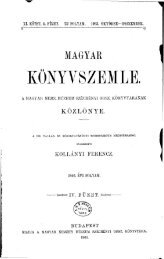
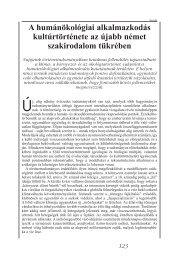
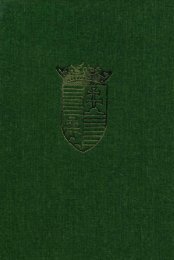
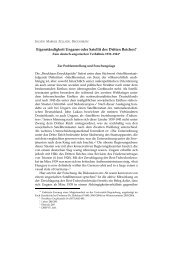
![Letöltés egy fájlban [36.8 MB - PDF] - EPA](https://img.yumpu.com/23369116/1/172x260/letoltes-egy-fajlban-368-mb-pdf-epa.jpg?quality=85)
